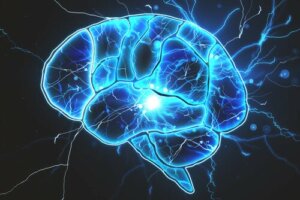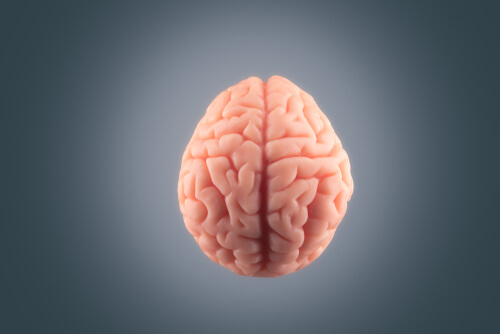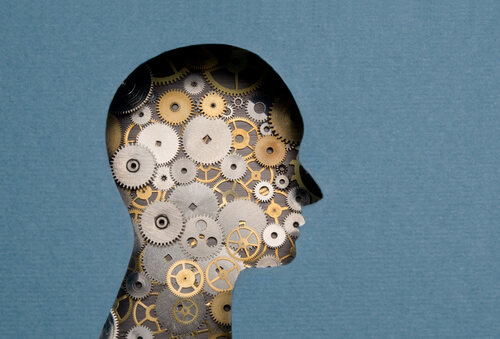Karl Friston and the Free Energy Principle

Karl Friston is a neuroscientist and the creator of the free energy principle, which experts say could revolutionize brain studies. Before developing this theoretical conception, Friston had become famous for having developed a powerful technique for analyzing brain imaging results and unraveling various aspects of cortical activity in this organ.
Friston is considered the most relevant brain researcher of the last 25 years. In March 2010, he surprised everyone by presenting the free energy principle during Brain Awareness Week, an event organized by the European Parliament.
“Neurons are cells with delicate and elegant shapes, the mysterious butterflies of the soul, whose flapping of wings perhaps one day will clarify the secret of mental life.”
-Santiago Ramon y Cajal-
It’s believed that the free energy principle will make it possible to create a grand unified theory of the brain expressed in a mathematical law. In fact, at present, while much progress has been made in mapping the brain, it’s still not clear how its parts are integrated. Apparently, Friston’s theory goes in that direction.

Bayesian inferences
Bayesian statistical theory is a model based on probability. It was postulated by an English priest named Thomas Bayes, in the eighteenth century. However, this is a complex issue that we won’t mention in detail here. Nevertheless, Bayesian principles are a fundamental part of the theory of free energy and for this reason, we’ll give some basic information about them.
As a matter of fact, there’s an experiment that perfectly illustrates the Bayesian theory. In a room, there are several boxes, of which three-fourths are red and one-fourth are blue. The red boxes contain 80 percent red tokens and 20 percent blue tokens. The blue boxes contain 80 percent blue tokens and 20 percent red tokens.
Participants in this experiment are blindfolded, led to a box, and asked to draw tokens from it. The person must infer what color the box is from which they’re drawing tokens. In general terms, what’s deduced from this experiment is that people have an a priori inference. For example, “It’s more likely that I’ll get a red box because there are more red boxes”.
This a priori inference is then tested after the person has drawn the tokens. If they’ve pulled out more blue tokens than red ones, they’ll probably change their inference “Since I’ve drawn out more blue tokens, the box is probably blue”. This is called the likelihood function. Friston’s free energy principle claims that the brain works in this way.
The free energy principle
Professor Karl Friston of the Wellcome Trust Center for Neuroimaging proposed his free energy theory in 2010. It aims to explain how the brain works and is based on two basic principles. The first says that the brain constantly makes predictions about the world. In fact, it never stops doing it.
The second principle states that the brain applies Bayesian inferences to make those predictions consistent. It anticipates experiences ( a priori inference) and then adjusts its predictions based on what it observes and verifies in practice. According to Friston, the objective of this is to avoid any surprises, as far as possible.
It’s not that the brain doesn’t like surprises, but the extent to which it avoids them means it saves energy in its operation. That’s because the unexpected forces it to work harder and with greater application. Therefore, ‘predicting’ what is or isn’t going to happen, allows us to take advantage of what we’ve learned and to avoid expending more energy than necessary.

An experiment
Researchers from the psychology department at the University of Glasgow (Scotland) and the Max-Planck Institute for Brain Research in Frankfurt, Germany, conducted an experiment that appears to support the free energy principle. They started from the idea that the brain effectively ‘predicts’ to save energy.
To simplify, when you approach your work desk, you already have an image of it in your mind. You don’t need to look at each object to know that they’re there but, almost without seeing, you’ll reach out your hand and take the pen that you always leave in one of the drawers. Your attention will only be triggered if there’s something new or out of place.
To test this idea, the researchers used 12 volunteers. Each of them was asked to stare at a computer screen, on which there was an image, while their brains were monitored by a scanner. Below the fixed image and above it, two moving points appeared and disappeared. The researchers also introduced another dot that randomly scrolled across the screen.
They discovered that brain activity is lower when there are predictable elements, in this case, the fixed image and the two points above and below. On the other hand, it’s activated when an unpredictable stimulus appears, in this instance, the random point. This experiment proved the basic tenets of the promising free energy principle.
All cited sources were thoroughly reviewed by our team to ensure their quality, reliability, currency, and validity. The bibliography of this article was considered reliable and of academic or scientific accuracy.
Aponte, E. A. (2015). ¿Es el principio de la energía libre una teoría normativa o descriptiva de la cognición? Pensamiento y Cultura, 18(1), 6-45.
This text is provided for informational purposes only and does not replace consultation with a professional. If in doubt, consult your specialist.








